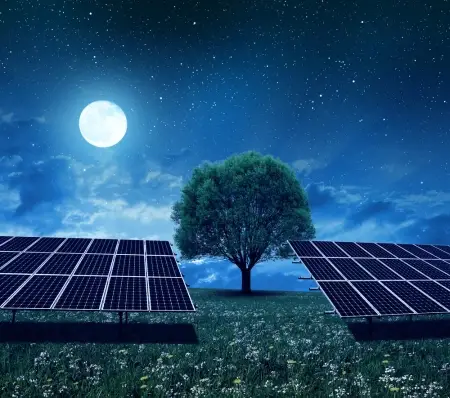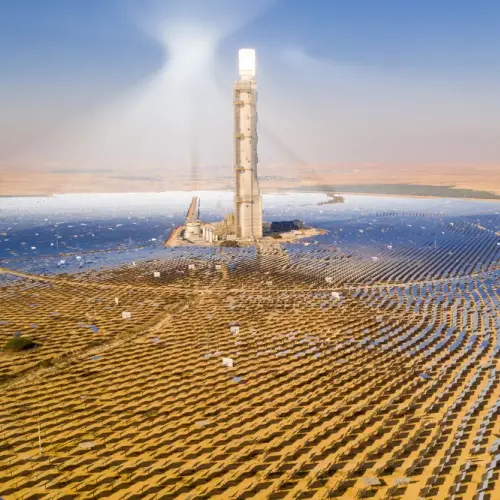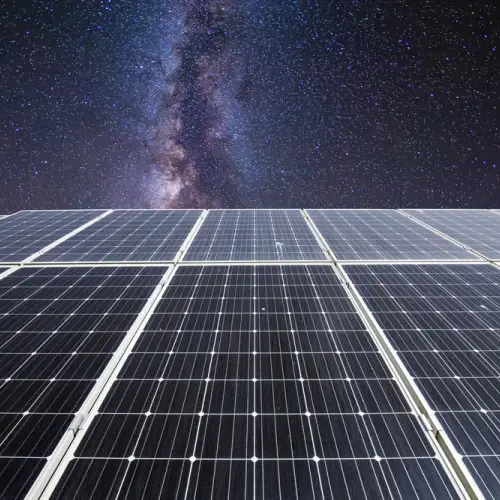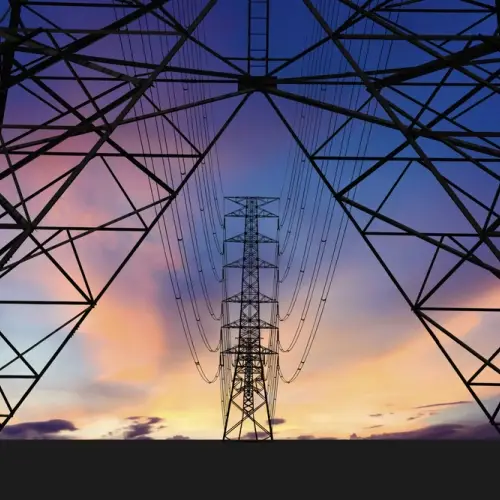
The idea of “nighttime solar power” may seem counterintuitive at first glance. After all, solar energy comes from the Sun, a source of light and heat that is only available during the day. However, technological and scientific advances are changing that perception, opening up possibilities for storing and using solar energy even after the sun has set.
This concept of harnessing solar energy at night is becoming increasingly relevant as the world looks for more sustainable solutions to meet its growing energy needs.
Reliance on renewable energy and storage
With the shift to renewable energy sources such as solar and wind, one of the biggest issues that has arisen is how to store the energy generated when the sources are not available. Unlike fossil or nuclear power plants, which can generate electricity 24 hours a day, renewable energy is intermittent.
The sun does not shine all the time and the wind does not always blow. This raises a fundamental question: how to ensure a constant supply of electricity in a world that is increasingly dependent on renewable sources?
For solar energy, in particular, this challenge is even more pronounced because, although enormous amounts of energy are generated during the day, peak electricity demand in many regions occurs in the evening and at night, when people return home and turn on lights, appliances and electronic devices.
In this context, the ability to store and release solar energy when the sun is not present becomes essential to fully exploit this clean energy source.
Thermal storage technology
 One of the most promising approaches to storing solar energy for use at night is thermal storage technology. Solar thermal power systems, also known as concentrated solar power (CSP) plants, are one of the key solutions in this area. Unlike traditional photovoltaic solar panels, which convert sunlight directly into electricity, CSP systems use mirrors or lenses to concentrate sunlight on a specific point.
One of the most promising approaches to storing solar energy for use at night is thermal storage technology. Solar thermal power systems, also known as concentrated solar power (CSP) plants, are one of the key solutions in this area. Unlike traditional photovoltaic solar panels, which convert sunlight directly into electricity, CSP systems use mirrors or lenses to concentrate sunlight on a specific point.
This concentrated heat can be used to generate steam, which in turn drives a turbine connected to an electricity generator.
The trick is in how the heat is handled. Instead of using solar heat to generate electricity immediately, CSP systems can store it in special materials, such as molten salts that are able to retain heat for long hours, even after the sun has set. This stored heat can then be released when needed, allowing solar plants to continue producing electricity at night.
The use of molten salts as a thermal storage medium is particularly efficient because they can reach extremely high temperatures, making them a dense and efficient storage of energy.
This technology has already been implemented in several solar plants around the world, such as the Gemasolar solar plant in Spain, which has managed to generate electricity continuously for 24 hours thanks to its thermal storage system.
High-capacity batteries: a complementary solution
While thermal storage is an effective option, it is not the only way to make solar energy available at night.
Another rapidly developing solution is high-capacity batteries, which can store electricity generated during the day and release it when needed. Lithium-ion batteries, such as those used in electronic devices and electric cars, are being scaled up for grid-level applications to store energy on a large scale.
One of the advantages of batteries over thermal storage is their flexibility. Batteries can store energy from different sources, not just solar, making them a versatile option for integration into combined renewable energy systems (solar, wind, etc.). In addition, batteries can be installed in different locations, from large-scale solar plants to small installations in homes.
Tesla, for example, has been developing its Powerwall and Powerpack batteries with the goal of providing renewable energy storage for homes and businesses. These batteries allow electricity generated by solar panels during the day to be stored and used at night, which not only reduces reliance on the power grid but also allows homes and businesses to efficiently generate and consume their own energy.
Lithium-based batteries are not the only technology in development. Alternatives such as flow batteries and solid-state batteries are also being investigated, which could offer greater storage capacity and lifespan than current ones.
Solar panels at night
 In addition to storage technologies, radical innovations are also emerging that could change the way we think about solar energy at night. One area of research that has recently gained attention is the possibility of developing solar panels that work even in the dark.
In addition to storage technologies, radical innovations are also emerging that could change the way we think about solar energy at night. One area of research that has recently gained attention is the possibility of developing solar panels that work even in the dark.
These nocturnal solar panels, which are still in the experimental stages, would work based on a physical principle known as thermal radiation. During the day, conventional solar panels absorb sunlight and convert it into electricity. However, at night, the Earth radiates heat into space, creating a temperature gradient between the Earth's surface and outer space.
There is research exploring how to harness this heat flow through devices called thermoradiative diodes, which could theoretically generate small amounts of electricity from thermal radiation.
Although this technology is still far from being commercially viable, it represents an innovative approach that could complement energy storage systems and help harness even naturally occurring energy processes at night.
Grid integration and the future of nighttime solar power
 One of the key challenges for nighttime solar power is how to efficiently integrate it with current electricity grids.
One of the key challenges for nighttime solar power is how to efficiently integrate it with current electricity grids.
In many countries, power grid infrastructure is designed to handle conventional, centralized energy sources, such as gas, coal, or nuclear power plants. However, renewables, including solar, are more dispersed and variable, meaning power grids must become smarter and more flexible to manage the intermittency and variability of these sources.
The power grids of the future will need to adapt to handle bi-directional energy flows. This means that instead of simply receiving power from large centralized power plants, grids must also be able to receive power from a multitude of smaller sources, such as homes equipped with solar panels and batteries.
This vision, known as a “smart” or “distributed” grid, could be key to ensuring that nighttime solar and other forms of renewable energy can be seamlessly integrated into national energy systems.
As technologies such as thermal storage, high-capacity batteries and night-time solar panels develop, it will also be crucial to have policies that support the adoption of these technologies. Governments and utilities will play a key role in creating financial and regulatory incentives that facilitate the transition to a cleaner, more flexible energy system.